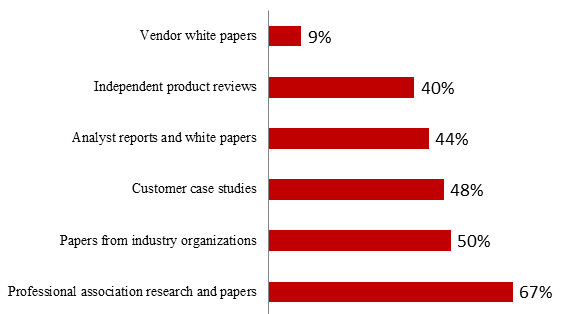
by Fronetics | Aug 26, 2014 | Blog, Content Marketing, Marketing, Strategy

A 2013 survey of B2B marketers by LinkedIn found that when it comes to lead generation, customer testimonials and case studies are considered the two most effective content marketing tactics. Why are customer testimonials and case studies so effective? Because they are content that is valued and trusted by B2B buyers.
How can you write a B2B case study that generates leads?
Here are five elements of an effective case study.
- A case study is a story. Case studies that read like a story succeed. Case studies that are written, for example, as a sales pitch fall flat and fail to attract and engage prospective buyers.
- Case studies are not a sales pitch. Inform and educate through the sales pitch, but do not “sell.” An effective case study will generate new customers and sales.
- Prospective buyers turn to case studies for concrete examples. Make it easy for the reader to obtain the information desired. Bullet points, quotes, and lists are all examples of how you can deliver the highlights.
- Keep it short and sweet. A case study should provide the prospective buyer with enough information, but should not go into the minutia.
- Include these three components: the challenge, the solution, and the results.

by Fronetics | Aug 19, 2014 | Blog, Content Marketing, Leadership, Marketing, Strategy, Talent

By consistently creating, curating, and distributing valued and trusted content you can position your company as an industry leader.
What is valued and trusted content?
“Peer-power”
A survey by the CMO Council found that all content is not viewed equally by B2B buyers. “Peer-powered content” is more valued and trusted than non-peer content.
The survey found that professional association research and papers are the most valued and trusted content. Papers from industry organizations, case studies, and analyst reports and white papers were also reported to be valued. In contrast, vendor white papers were not found to be valued highly.
What type of content do you most value and trust?

Source: CMO Council
Depth not promotional
The characteristics that were found to be valued the most by B2B buyers were depth of the content (47 percent) and ease of access and readability (44 percent). Respondents reported that they do not like content that has too many requirements to download (50 percent) or is promotional or self-serving (43 percent).
Good content is shared
B2B buyers report that they share good content. Fifty-nine percent of survey respondents share content with 25 or more peers and associates, and 28 percent of survey respondents forward content on to 100 or more people.
Position yourself
To position your company as an industry leader you need to provide valued and trusted content. This means creating, curating, and distributing content that educates, informs, and addresses specific needs.
It also means avoiding the trap of self-promotion. Valued and trusted content is not content that is self-serving or promotional, rather valued and trusted content provides customers with answers, solutions, and education.
Blogging is essential, but additional content is necessary as well. Case studies and white papers are two go-to content solutions that can help you position your company as a trusted leader within your industry.
Remember that you don’t need to go it alone. More than 44 percent of B2B marketers report that they outsource content creation.

by Fronetics | Aug 19, 2014 | Blog, Content Marketing, Leadership, Marketing, Strategy, Talent

By consistently creating, curating, and distributing valued and trusted content you can position your company as an industry leader.
What is valued and trusted content?
“Peer-power”
A survey by the CMO Council found that all content is not viewed equally by B2B buyers. “Peer-powered content” is more valued and trusted than non-peer content.
The survey found that professional association research and papers are the most valued and trusted content. Papers from industry organizations, case studies, and analyst reports and white papers were also reported to be valued. In contrast, vendor white papers were not found to be valued highly.
What type of content do you most value and trust?

Source: CMO Council
Depth not promotional
The characteristics that were found to be valued the most by B2B buyers were depth of the content (47 percent) and ease of access and readability (44 percent). Respondents reported that they do not like content that has too many requirements to download (50 percent) or is promotional or self-serving (43 percent).
Good content is shared
B2B buyers report that they share good content. Fifty-nine percent of survey respondents share content with 25 or more peers and associates, and 28 percent of survey respondents forward content on to 100 or more people.
Position yourself
To position your company as an industry leader you need to provide valued and trusted content. This means creating, curating, and distributing content that educates, informs, and addresses specific needs.
It also means avoiding the trap of self-promotion. Valued and trusted content is not content that is self-serving or promotional, rather valued and trusted content provides customers with answers, solutions, and education.
Blogging is essential, but additional content is necessary as well. Case studies and white papers are two go-to content solutions that can help you position your company as a trusted leader within your industry.
Remember that you don’t need to go it alone. More than 44 percent of B2B marketers report that they outsource content creation.

by Fronetics | Aug 14, 2014 | Blog, Marketing, Social Media, Strategy, Supply Chain
We want to hear from you! 
We want to know what questions you have about:
- Demand generation
- Establishing and growing an online presence
- Social media
- Content
These categories are intentionally broad because we want to you to think about any (and all) questions and pain points you might have related to these topics.
Remember the adage – there is no stupid question.
Why do we want to hear from you?
We have an upcoming series of blog posts that are focused on answering questions that companies within the supply chain industry have regarding demand generation, an online presence, social media, and content. We want to give you the opportunity to ask your questions and state your challenges so that your questions and challenges can be addressed.
How can you be heard?
Fill out the form below or content with us via Twitter or LinkedIn.

by Fronetics | Aug 14, 2014 | Blog, Marketing, Social Media, Strategy, Supply Chain
We want to hear from you! 
We want to know what questions you have about:
- Demand generation
- Establishing and growing an online presence
- Social media
- Content
These categories are intentionally broad because we want to you to think about any (and all) questions and pain points you might have related to these topics.
Remember the adage – there is no stupid question.
Why do we want to hear from you?
We have an upcoming series of blog posts that are focused on answering questions that companies within the supply chain industry have regarding demand generation, an online presence, social media, and content. We want to give you the opportunity to ask your questions and state your challenges so that your questions and challenges can be addressed.
How can you be heard?
Fill out the form below or content with us via Twitter or LinkedIn.

by Fronetics | Aug 13, 2014 | Blog, Marketing, Social Media, Strategy, Supply Chain
Leads are essential to the growth of your business. Social media is an effective way to find new leads.
Social media allows you to find new leads by doing something called social prospecting. Social prospecting is the art of searching the social web, identifying potential prospects for your business, and engaging them in a manner that draws them to your company’s website and through your funnel.
Social prospecting
At the core, social prospecting is about listening. It is about listening to social media conversations in order to generate leads for your business. It’s beyond monitoring keywords. It’s about engaging people that may or may not know what your business can do for them.
Workbook
We’ve identified the quickest way to find potential prospects on Twitter, Facebook, LinkedIn, Pinterest, and Google+ and compiled them in a workbook. Every worksheet includes: a short preparatory work to make the actual prospecting easy; visual instructions on how and where to find prospects; pro tips that will help you get the best results; prescriptions (Marketing Rx) for success; and take-home exercises for follow-up prospecting
Get started
Want to get started? Simply download the workbook.








